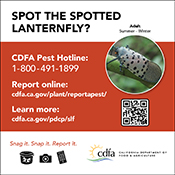Spotted Lanternfly
The spotted lanternfly (Lycorma delicatula) (SLF) is an invasive pest, primarily known to feed on tree of heaven (Ailanthus altissima) but has many other host plants, including grape, hop, apple, stone fruit, maple, poplar, walnut, and willow. If allowed to spread in the United States, it could impact the country’s fruit, ornamental, and forest industries. Early detection is critical to prevent economic and ecological losses. The public will play a key role in detecting spotted lanternfly and the success of stopping its spread depends on help from the public to look for and report signs of the pest. The residents of California are encouraged to report any SLF finds to the CDFA Pest Hotline at 1-800-491-1899.
Origin: The spotted lanternfly is an invasive plant hopper that is native to China and likely arrived in North America hidden on goods imported from Asia.
Current Distribution in the United States: SLF has spread to 14 eastern states since being introduced to the U.S. in 2014. Click for a map of confirmed SLF locations. These states are carrying out various surveying, treatment, and control activities in coordination with the United States Department of Agriculture. Live, viable SLF life stages have not been found in the environment in California. But over the past few years, multiple dead life stages and a few live adults have been intercepted in airplane shipments and a dead adult, dead nymph, and several live egg masses have been intercepted at border stations.
How it Spreads: Spotted lanternflies are invasive and can spread rapidly when introduced to new areas. While the insect can walk, jump, or fly short distances, its long-distance spread is facilitated by people who move infested material or items containing egg masses. The spotted lanternfly lays eggs on almost any surface, including vehicles, trailers, outdoor equipment, and patio furniture.
Damage: Both nymphs and adults of spotted lanternfly cause damage when they feed, sucking sap from stems and branches. This can reduce photosynthesis, weaken the plant, and eventually contribute to the plant’s death. In addition, feeding can cause the plant to ooze or weep, resulting in a fermented odor, and the insects themselves excrete large amounts of fluid (honeydew). These fluids promote mold growth and attract other insects.
Learn How to Spot the Spotted Lanternfly

Photo credit: Lawrence Barringer, Pennsylvania Department of Agriculture, Bugwood.org
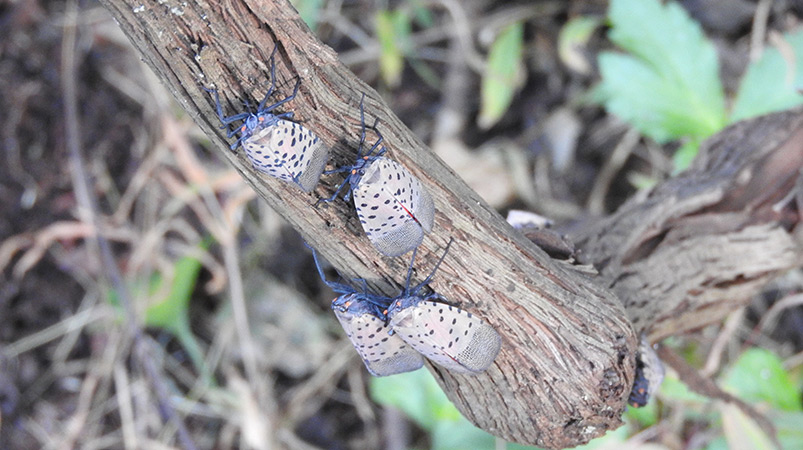
Photo credit: Richard Gardner, Bugwood.org
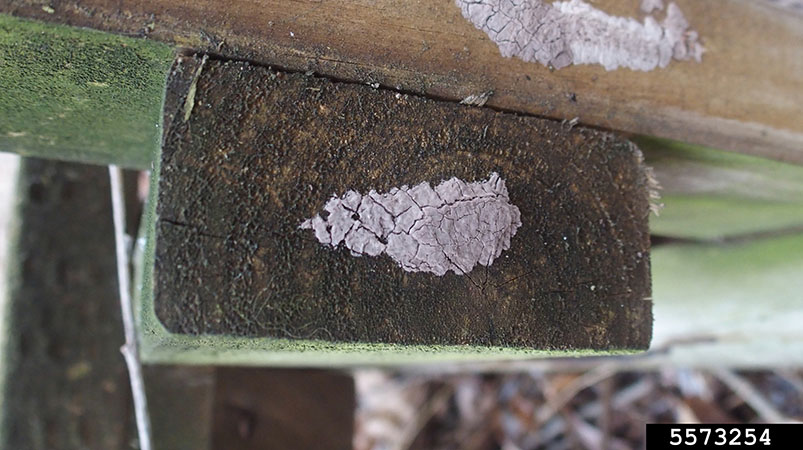
Photo credit: Emelie Swackhamer, Penn State University, Bugwood.org

Photo credit: Emelie Swackhamer, Penn State University, Bugwood.org
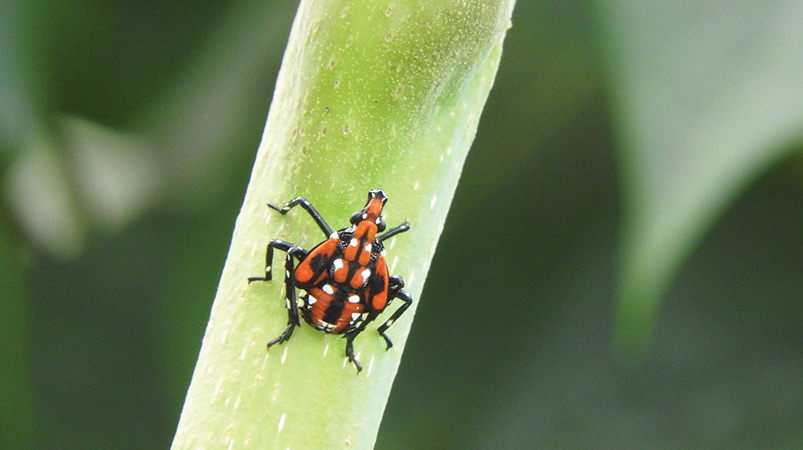
Photo credit: Richard Gardner, Bugwood.org
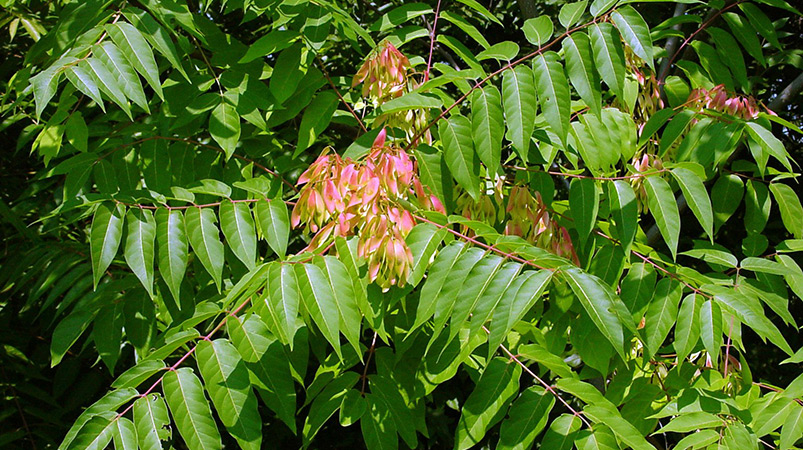
Photo credit: Chuck Bargeron, University of Georgia, Bugwood.org
Additional Resources
- CDFA Action Plan for Spotted Lanternfly
- United States Department of Agriculture Spotted Lanternfly 5-Year Strategy, 2024 - 2028
- California Establishes Exterior Quarantine for Spotted Lanternfly – July 2021
- United States Department of Agriculture Animal and Plant Inspection Service (USDA APHIS) – Spotted Lanternfly website
- USDA APHIS – Spotted Lanternfly Resources
- Environmental Entomology – Current Research on Spotted Lanternfly
-
Communications toolkit
- "Spotted Lanternfly Pest Alert" – English and Spanish – November 2021
- "Keep Spotted Lanternfly Out of California” video – English and Spanish – June 2021
- Brochure – English and Spanish – November 2021
- Rack card – English and Spanish – November 2021
- Flyer – English and Spanish – November 2021
- Poster – English and Spanish – November 2021
- Postcard – English and Spanish – November 2021
- Banner – English and Spanish – November 2021
- Advertising Artwork
To request printed material or digital files for professional printing, contact the PDCP by email or by calling (916) 900-5024.
-
Videos
- Keep Spotted Lanternfly Out of California” video – English and Spanish – June 2021
- “Spotted Lanternfly – A Threat to California Winegrapes” – CDFA, June 2020 webinar recording
- “Spotted Lanternfly: Host Range, Biology, Distribution, and Management” – University of California Cooperative Extension, May 2020
-
PD/GWSS Board Newsletter Articles and CDFA News
- Safeguarding the California Winegrape Industry Against the Spotted Lanternfly – Spring 2020
- How Can We Keep Spotted Lanternfly out of California? – Fall 2020
- Which Parts of the State are Most at Risk for Spotted Lanternfly? – Winter 2021
- Invasive Spotted Lanternfly stopped at CDFA Border Station – July 2022


